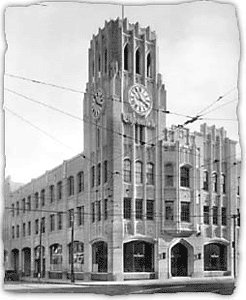The controversial mayoral appointment of attorney Richard Johns to historian’s seat on the Historic Preservation Commission is being challenged in court by Gertrude Platt and a group of local preservationists calling itself The Prop. J Committee. They are asking the judge to remove Johns from his post.
“Voters approved Proposition J creating the Historic Preservation Commission for the clear and distinct purpose of protecting San Francisco’s historic resources. To erode the voter-mandated qualifications and expertise on the Commission undermines the will of the voters and the intent of the law,” Platt, a 14-year member of the city’s Landmarks Preservation Advisory Board (which 2008’s Prop. J replaced with the commission), said last week in a prepared statement.
The group’s press release noted that “Johns is a business attorney and husband to Eleanor Johns, former Mayor Willie Brown’s longtime senior staffer and confidante dating back to his tenure as Speaker of the California Assembly. Mr. Johns is not an historian….No testimony or material was presented to the Board of Supervisors to establish otherwise.”
In fact, Johns’ resume and comments to the Guardian two weeks ago (when he dismissed concerns about his connections to Brown as “lame” and “silly”) indicate that his only experience in historic preservation has been working for almost 20 years to preserve the Old Mint, by serving on the San Francisco Museum and Historical Society Board of Directors. But a review of that body doesn’t inspire much confidence that he’ll stand for historic preservation in the face of pressure from developers.
The president of the board is Jim Lazarus, who is the senior vice president for public policy at the San Francisco Chamber of Commerce and a regular advocate for greater development of the city. There are other real estate and corporate representatives on that board as well, most notably Martin Cepkauskas, director of real estate for the Western Properties Division of Hearst Corporation, which is the middle of seeking city permits and approval to redevelop its historically significant Chronicle Building, where the paper has been since 1924, adjacent to Mint Plaza.
So we asked Lazarus, Johns, and Cepkauskas about what would seem to be a conflict of interests between board members who are pushing for development and John’s new role as a guardian of historically significant buildings. After I e-mailed the trio, Lazarus responded to the group “I will respond to this guy,” to which Johns wrote “good” and refused to answer further Guardian inquiries.
In a phone interview, Lazarus said there was no conflict because “nobody has any financial interest in the Mint Project. It’s a pure nonprofit board.” He also made the distinction that “we’re concerned with preserving San Francisco history, not buildings.” But in the name preserving history, the society helped create Mint Plaza, a welcoming plaza across from the Chronicle Building that is ringed by restaurants, retail, and office space.
Lazarus personally bought Cepkauskas onto the society’s board last year because the Hearst project “will have to do community mitigation and I want the Mint to be the beneficiary of that mitigation.” Yet he denies that there is a conflict between the interests of his board and the Hearst project and that of historic preservation and the public interest.
Lazarus also said “I assume Richard would like to stay on our board,” and Lazarus sees no reason why Johns should resign even though the Hearst project is likely to come before the commission later this year.

